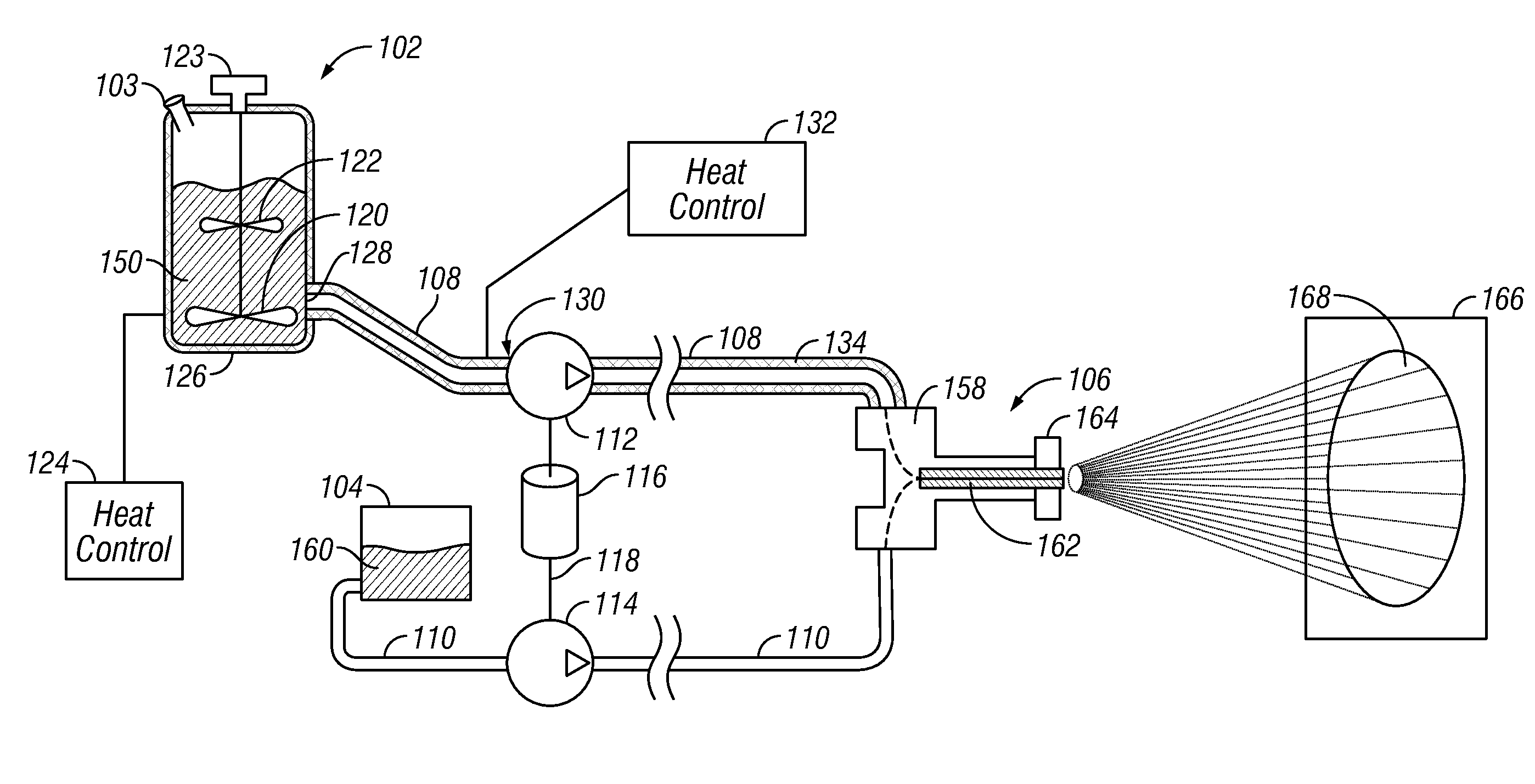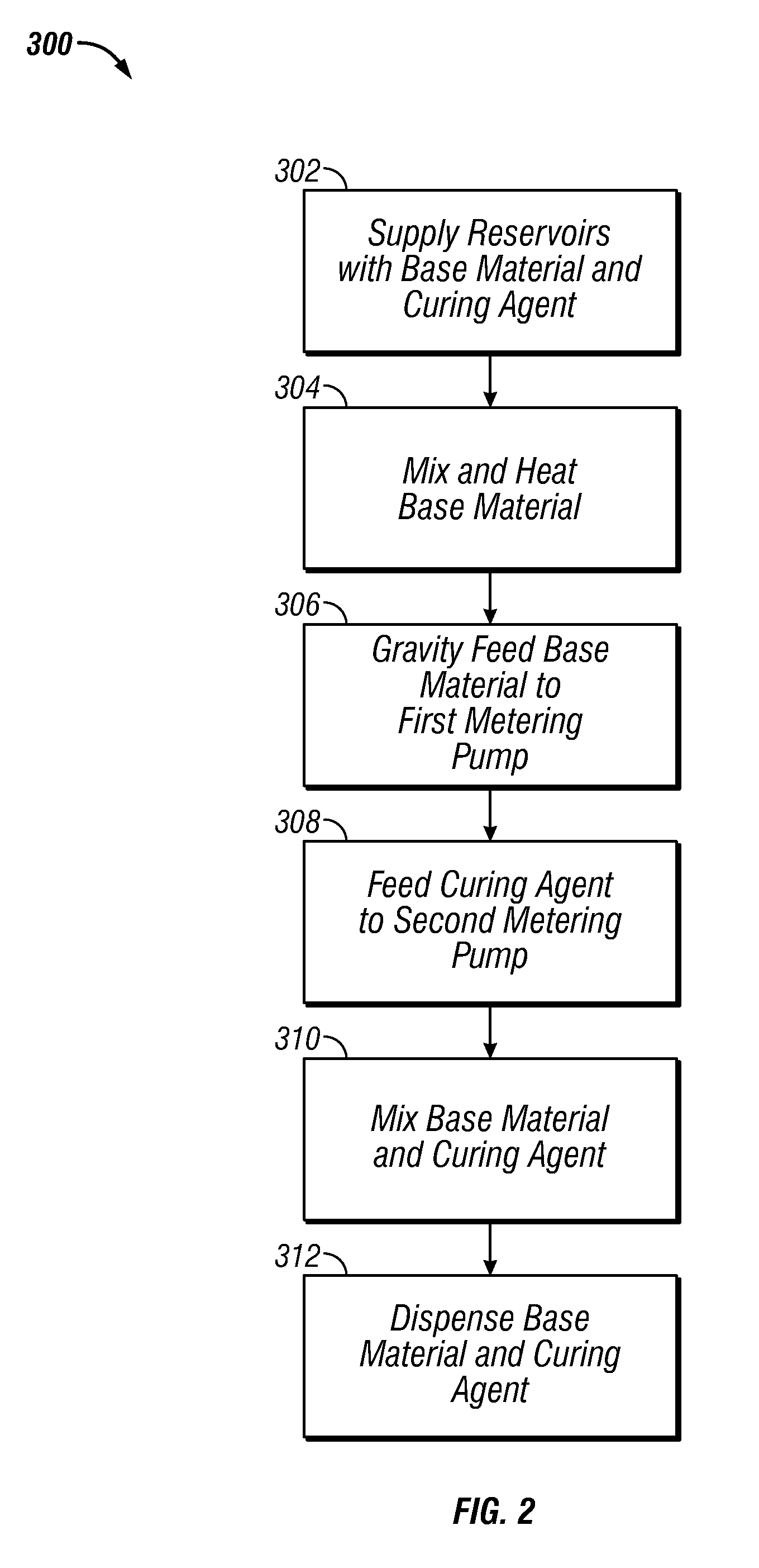Systems and methods for processing and despensing filled multi-component material
a multi-component material and filler technology, applied in the field of multi-component materials, can solve the problems of many fillers not adhering well to a particular polyurethane or polyurea matrix, many fillers can reduce desired properties like elasticity, and many fillers can be relatively expensive, so as to achieve high degree of uniformity and consistency, strong and durable finished surface, and low cost
- Summary
- Abstract
- Description
- Claims
- Application Information
AI Technical Summary
Benefits of technology
Problems solved by technology
Method used
Image
Examples
Embodiment Construction
[0048]In the following description of exemplary embodiments, reference is made to the accompanying drawings which form a part hereof, and in which it is shown by way of illustration specific embodiments in which the invention may be practiced. It is to be understood that other embodiments may be utilized and structural changes may be made without departing from the scope of the preferred embodiments of the present invention.
[0049]As used herein, the term “pump” when used as a noun refers to any motive source capable of physically moving a material such as, without limitation, a fluid or viscous material.
[0050]As used herein, the term “reactive mixture” refers to any multi-component reactive mixture where each individual component (e.g., first and second reactive components), when mixed, result in a chemical reaction whereby the substantially liquid individual components harden into a substantially solid state after a relatively brief period of time. Typically, the reaction proceeds ...
PUM
| Property | Measurement | Unit |
|---|---|---|
| Fraction | aaaaa | aaaaa |
| Fraction | aaaaa | aaaaa |
| Fraction | aaaaa | aaaaa |
Abstract
Description
Claims
Application Information
 Login to View More
Login to View More - R&D
- Intellectual Property
- Life Sciences
- Materials
- Tech Scout
- Unparalleled Data Quality
- Higher Quality Content
- 60% Fewer Hallucinations
Browse by: Latest US Patents, China's latest patents, Technical Efficacy Thesaurus, Application Domain, Technology Topic, Popular Technical Reports.
© 2025 PatSnap. All rights reserved.Legal|Privacy policy|Modern Slavery Act Transparency Statement|Sitemap|About US| Contact US: help@patsnap.com



